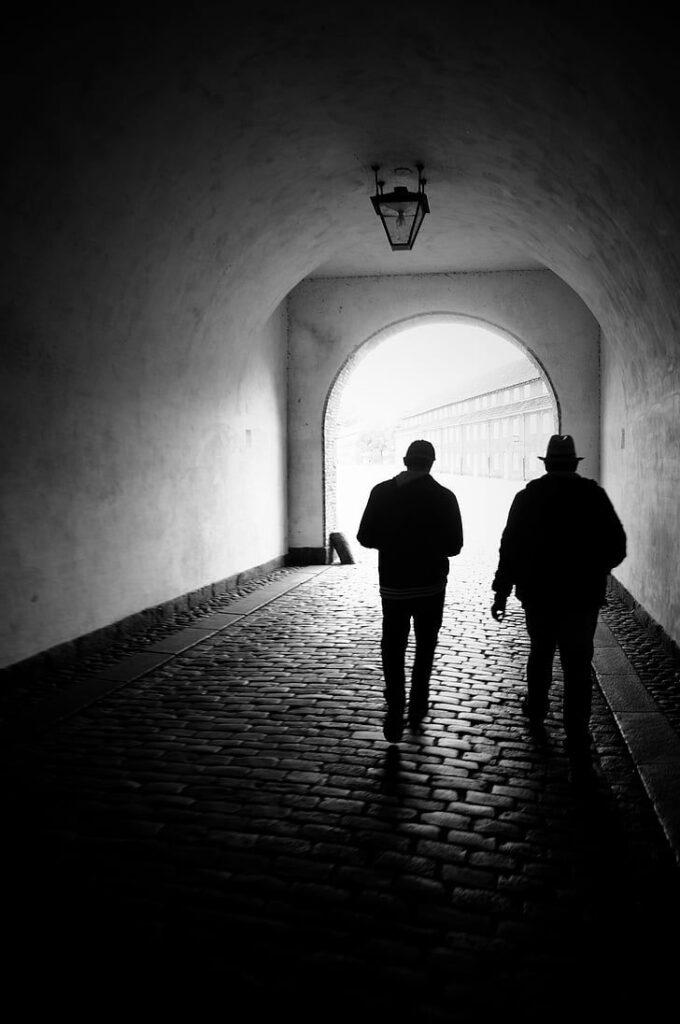
Oh, the glorious 90s! A decade of unparalleled pop culture, groundbreaking cinema, and movies that etched themselves into our collective consciousness. From rom-coms that made us swoon to action flicks that kept us on the edge of our seats, the films of the 1990s hold a special, nostalgic place in our hearts. We rewatch them, quote them, and sometimes, with a keen eye, we even spot the little quirks that make them even more endearing.
Because, let’s be real, while we adore these cinematic masterpieces, even the most meticulous filmmakers and production crews are only human. The journey from script to screen is a marathon, not a sprint, involving countless hours of pre-production, filming, post-production, visual effects, and development. With so much time and money poured into these magnificent creations, it’s almost expected that everything should be perfectly seamless, right?
Well, as you’re about to discover, that’s not always the case! Get ready to have your mind blown as we rewind and explore some of the most baffling blunders that somehow snuck past the eagle eyes of countless filmmakers and viewers alike. From continuity calamities to historical head-scratchers, these are the flubs that keep fans talking, arguing, and hitting pause even decades later. So, grab your popcorn, settle in, and prepare to party like it’s 1999 as we unveil the first six major mistakes from your beloved 90s movies!
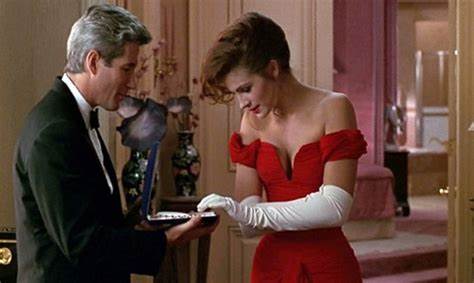
1. **Pretty Woman (1990): The Great Breakfast Illusion**Let’s kick things off with a classic rom-com that stole hearts: 1990’s *Pretty Woman*. Julia Roberts and Richard Gere were pure magic on screen, and the film itself is practically a fairy tale for the modern age. But even in this polished romance, a breakfast scene managed to serve up a rather unforgettable continuity error that fans still chuckle about.
Picture this: Roberts, playing the charming Vivian, is having breakfast with Gere’s character, Edward Lewis. She’s deep in conversation, asking Edward about his high-flying line of work and his educational background. As the camera focuses on her, she’s seen enjoying a delicious croissant. All perfectly normal, right?
Hold that thought! Because in the blink of an eye, or rather, in the span of only 20 seconds as the scene progresses, the camera pans back to Vivian, and lo and behold, her croissant has mysteriously transformed into a pancake! It’s the kind of blink-and-you’ll-miss-it moment that once spotted, can never be unseen, leaving viewers scratching their heads and wondering about the culinary magic happening off-screen.
But wait, there’s more to this breakfast blunder! The mistake is actually two-fold, making it even more hilarious. The first time the pancake appears, it already has a bite taken out of it. Vivian then proceeds to take a second bite while playfully joking that Edward’s parents “must be really proud.” However, just moments later, when the camera cuts back to her once again, the pancake miraculously reverts to having only one bite. It’s a delightful double-whammy of a continuity error that proves even the most iconic scenes aren’t immune to a little on-set breakfast chaos.
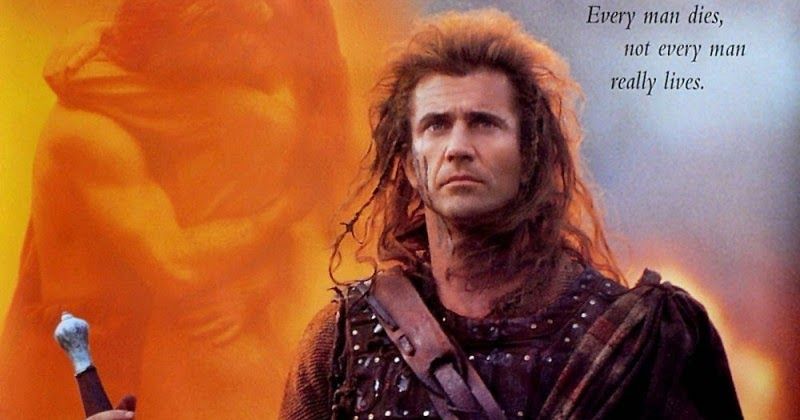
2. **Braveheart (1995): The Medieval Motorway**Next up, we journey back to 13th-century Scotland with the epic historical drama *Braveheart*. Mel Gibson’s portrayal of the legendary William Wallace captivated audiences, leading the film to win an Oscar for Best Picture in 1996. While the movie is renowned for its grand scale and intense battle sequences, it’s also famous for taking a few creative liberties with historical accuracy – and one particular scene features an anachronism so glaring, it’s hard to believe it made the final cut.
Amidst the fierce and brutal battles fought by William Wallace and his men against the English invaders, eagle-eyed viewers have spotted something truly out of place. In one of these sweeping battle scenes, positioned at the bottom left of the screen, you can clearly make out a parked car. Yes, you read that right – a modern automobile chilling in the backdrop of a medieval Scottish conflict.
It doesn’t take a historian to figure out that cars were definitively not a thing in the late 1200s. The sight of a vehicle from a completely different millennium casually waiting in the wings of a brutal medieval confrontation is nothing short of baffling. How this rather obvious intrusion managed to slip past the countless eyes of the editing team remains a true mystery to this day.
This anachronistic gem provides a moment of unintended comedy in an otherwise serious film. It serves as a fantastic reminder that even the most ambitious and critically acclaimed blockbusters can sometimes leave behind little Easter eggs of human error. It certainly gives you something to look for the next time you settle in for a *Braveheart* rewatch!
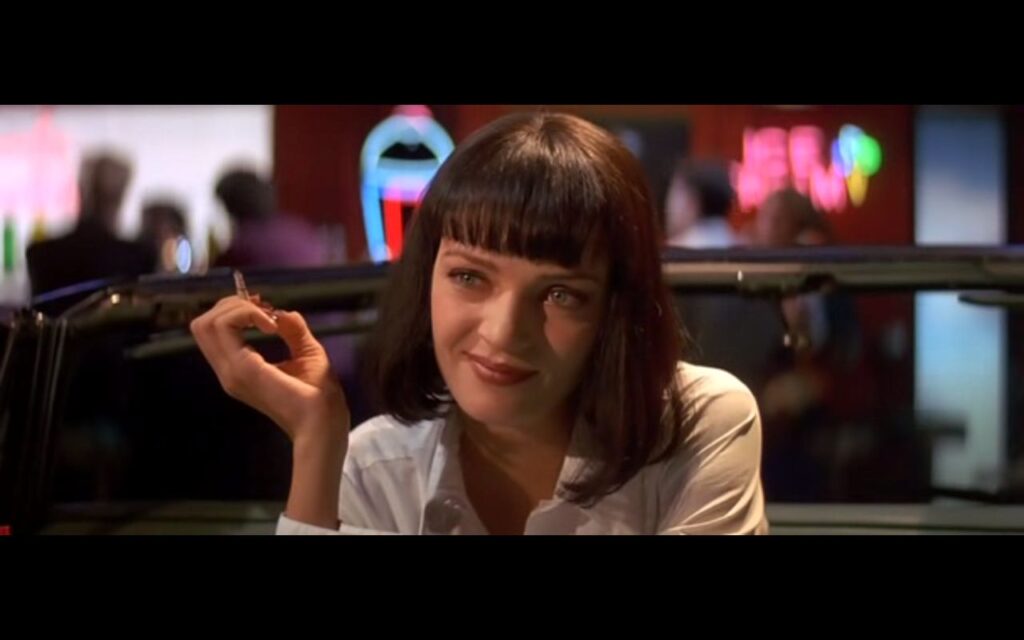
3. **Pulp Fiction (1994): The Bullet Hole Pre-Show**Quentin Tarantino’s 1994 crime drama *Pulp Fiction* is a cinematic masterpiece, celebrated for its non-linear narrative, sharp dialogue, and unforgettable characters like Jules Winnfield and Vincent Vega. It’s a film so rich in detail that fans have been dissecting it for decades, and in doing so, they’ve uncovered a few fascinating errors. Among these, one continuity error stands out as particularly iconic and hotly debated: the infamous pre-existing bullet holes.
The scene in question takes place in the apartment where Jules (Samuel L. Jackson) and Vincent (John Travolta) are attempting to retrieve a mysterious briefcase. They’re in the midst of a tense conversation, casually discussing the finer points of Big Kahuna Burger, when suddenly, their peaceful breakfast is interrupted by a hail of gunfire from a hidden assailant. It’s a shocking, pivotal moment that redefines the scene’s tension.
However, if you hit pause and rewind just a few seconds before the ambush, a remarkable detail comes into focus. Clearly visible on the wall behind Jules and Vincent are bullet holes. Yes, the very bullet holes that are supposed to be *created* by the imminent shootout are already there, waiting patiently for their cue. It’s a true “wait, what just happened?” moment that once noticed, makes you question every other detail in the frame.
This particular goof is so well-known among film aficionados that it’s practically a character in itself. It highlights the intricate dance of continuity in filmmaking and how easily a small oversight can become a legendary talking point. While *Pulp Fiction* is packed with layers of brilliance, this little pre-emptive bullet hole moment adds an extra layer of “how did they miss that?!” to its enduring legacy.
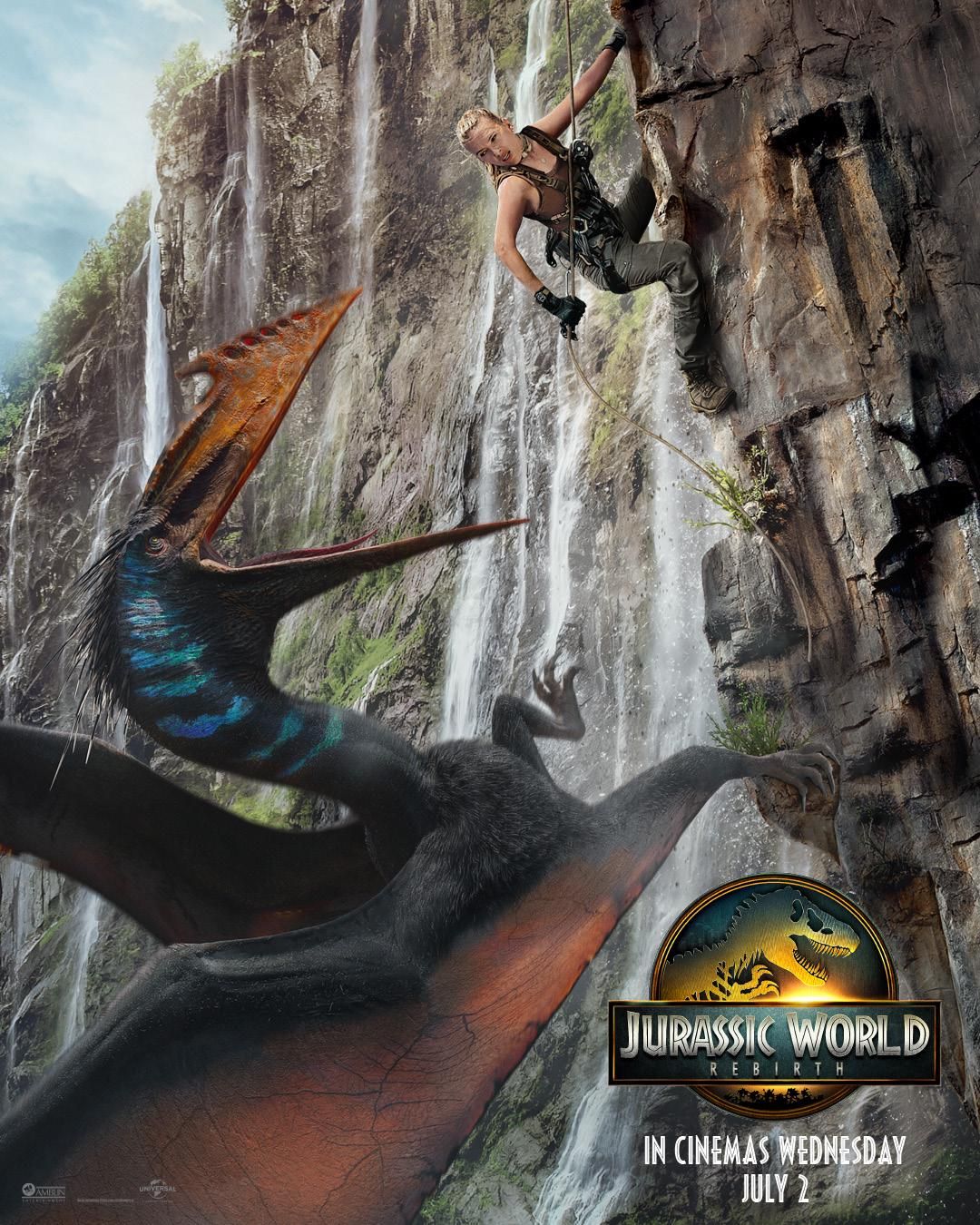
4. **Jurassic Park (1993): Dennis Nedry’s Pre-Recorded Ruse**Prepare to return to Isla Nublar, the setting of Steven Spielberg’s monumental 1993 film, *Jurassic Park*. This movie redefined visual effects and ignited the imagination of an entire generation, making us all wish dinosaurs still roamed the Earth – albeit safely behind very strong fences. Among its memorable characters, Dennis Nedry, the disgruntled and slippery computer programmer, plays a crucial role in the park’s catastrophic downfall. His act of sabotage sets off a chain of events that leads to pure prehistoric chaos.
Nedry’s scheme involves disabling the park’s security systems to steal dinosaur embryos. To coordinate his illicit activities, he engages in a video call with his accomplice. This scene is critical, building tension as Nedry receives instructions and prepares to execute his treacherous plan. It’s a moment designed to highlight his cunning and the technological sophistication of the park he’s about to betray.
However, a subtle yet significant detail in this high-stakes communication reveals a clever little production secret. If you look closely at the video screen during Nedry’s conversation, you can spot a status bar moving along the bottom. This seemingly innocuous visual cue suggests that Nedry isn’t engaged in a live, real-time video chat with his contact. Instead, the moving status bar indicates that he’s actually watching a pre-recorded video message.
This small oversight transforms a live, tense interaction into a playback session, subtly altering the perceived immediacy of Nedry’s communication. It’s a fascinating peek behind the curtain of filmmaking, showing how a prop or screen detail can accidentally reveal a bit of movie magic. Once you notice that little status bar, it’s hard not to imagine Nedry just fast-forwarding through a lengthy pre-recorded message while the park descends into chaos.
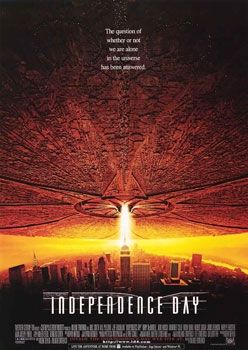
5. **Independence Day (1996): Area 51’s Secret “Art Department”**When it comes to explosive 90s blockbusters, few can hold a candle to *Independence Day*. This 1996 sci-fi extravaganza, featuring Will Smith, Jeff Goldblum, and an alien invasion of epic proportions, delivered thrills, chills, and some truly iconic moments. It’s the kind of movie you can rewatch endlessly, shouting at the screen and cheering for humanity’s fight for survival. But even in the top-secret, highly classified confines of Area 51, a humorous little production goof managed to sneak into the final cut.
The scene in question involves Jeff Goldblum’s character, computer expert David Levinson, who finds himself in the vast hangar housing the captured alien craft at Area 51. In a moment of frustration (or perhaps, genius), he’s seen throwing a bit of a tantrum, knocking things over as he grapples with the immense challenge of defeating the alien invaders. It’s a high-stakes environment, filled with advanced technology and military secrets.
However, amidst the classified equipment and alien debris, one particular item stands out with hilarious clarity: a bin or case that is clearly labeled “Art Department.” Yes, you read that correctly – a designated spot for the “Art Department” inside a top-secret government facility dedicated to studying extraterrestrial life and defense. It’s a charmingly misplaced piece of filmmaking reality intruding on the fictional world.
While we might expect Area 51 to house unimaginable technology and military secrets, it’s highly doubtful they’d have a budget line item for an “Art Department” in their real-world operations. This accidental prop, likely left by a set designer, provides a moment of unexpected levity and a relatable glimpse into the busy, often chaotic, world of movie production. It’s a gentle reminder that even the biggest, most serious sci-fi spectacles are still, at their heart, made by humans with labels on their equipment.
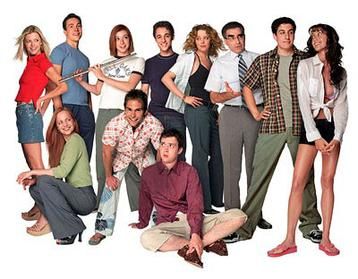
6. **American Pie (1999): Michigan’s Tropical Surprise**Let’s wrap up our first set of movie mishaps with a trip to the late 90s, courtesy of the quintessential teen comedy, *American Pie*. This 1999 film became an instant classic, launching careers and cementing its place in pop culture history with its hilarious, often cringe-worthy, and surprisingly heartfelt take on high school life. The movie is supposedly set in the suburban landscape of East Great Falls, Michigan, but a quick glance at the scenery reveals a geographical anomaly that will have you doing a double-take.
In one memorable scene, the school’s lacrosse team is celebrating a triumphant goal. It’s a moment of youthful exuberance, perfectly encapsulating the spirit of the film. However, keen-eyed viewers might notice something very peculiar in the background as the team cheers. Standing proudly and unmistakably in the distance is a palm tree. A full-blown, tropical palm tree, basking under what is supposed to be the Michigan sky.
Now, for anyone familiar with the geography and climate of Michigan, the presence of a palm tree is nothing short of an absolute impossibility. Michigan is known for its harsh winters and deciduous forests, not for the kind of tropical flora typically found in warmer, more southern climates. This glaring botanical blunder instantly pulls you out of the story and reminds you that the movie was, in fact, filmed in sunny California, not the Midwest.
It’s a delightful, if slightly distracting, example of how a film’s production location can inadvertently clash with its narrative setting. Once you’ve spotted Michigan’s rogue palm tree, it becomes a fun little Easter egg to point out on every rewatch. It’s a friendly reminder that while our favorite 90s films created believable worlds, sometimes nature itself decided to throw in a little unscripted cameo, much to our amusement!
Alright, buckle up, film fanatics! If you thought we were done unearthing the wonderfully weird blunders from our favorite 90s flicks, you’ve got another thing coming. We’ve only just scratched the surface of the cinematic slip-ups that make these beloved movies even more memorable. Get ready to dive into six more moments that will have you hitting pause, rewinding, and exclaiming, “Wait, how did I miss that?!” Let’s keep this nostalgic journey rolling as we shine a spotlight on more behind-the-scenes oopsies that prove even Hollywood’s biggest blockbusters are perfectly imperfect!
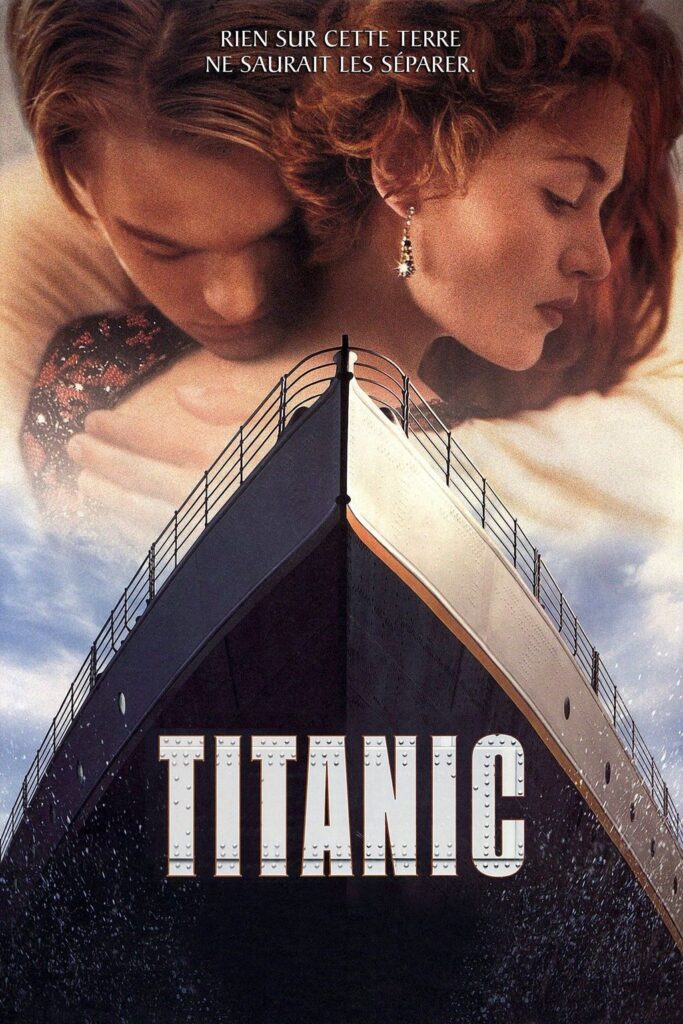
7. **Titanic (1997): The Anachronistic Lake**Next, let’s set sail for a cinematic voyage that broke box office records and countless hearts: James Cameron’s 1997 masterpiece, *Titanic*. This sweeping romance and disaster epic captivated audiences worldwide with its grand scale, unforgettable characters, and, of course, that epic love story between Jack and Rose. But even amidst all the iceberg-dodging drama and poignant farewells, a seemingly innocent detail from Jack Dawson’s backstory managed to create a rather icy plot hole that keen observers quickly thawed out.
The scene in question occurs early in the film, a pivotal moment where Jack, ever the charming rogue, saves Rose from attempting to take her own life. To dissuade her from jumping into the frigid ocean, he recounts a vivid, harrowing tale from his childhood. He describes falling through the ice while fishing on Lake Wissota, emphasizing the terrifying, freezing cold water that almost claimed him. It’s a powerful story, designed to connect with Rose and highlight Jack’s resilience and zest for life.
The only snag in this beautifully dramatic anecdote? Lake Wissota, as Jack describes it, simply didn’t exist at the time the Titanic sank. The massive ship tragically went down in 1912. However, the creation of Lake Wissota in Wisconsin was entirely man-made, formed by the damming of the Chippewa River. This significant engineering feat didn’t actually occur until 1917, a full five years *after* the Titanic’s ill-fated maiden voyage.
This anachronism means that while Jack’s story is undeniably compelling and effective within the film’s narrative, it’s also a geographical and historical impossibility for his character to have experienced it. It’s a blink-and-you’ll-miss-it detail that once pointed out, transforms a moment of intimate storytelling into a fun, albeit fictional, historical gaffe. This serves as a delightful reminder that even the most meticulously researched films can have a few cracks in their carefully constructed timelines!
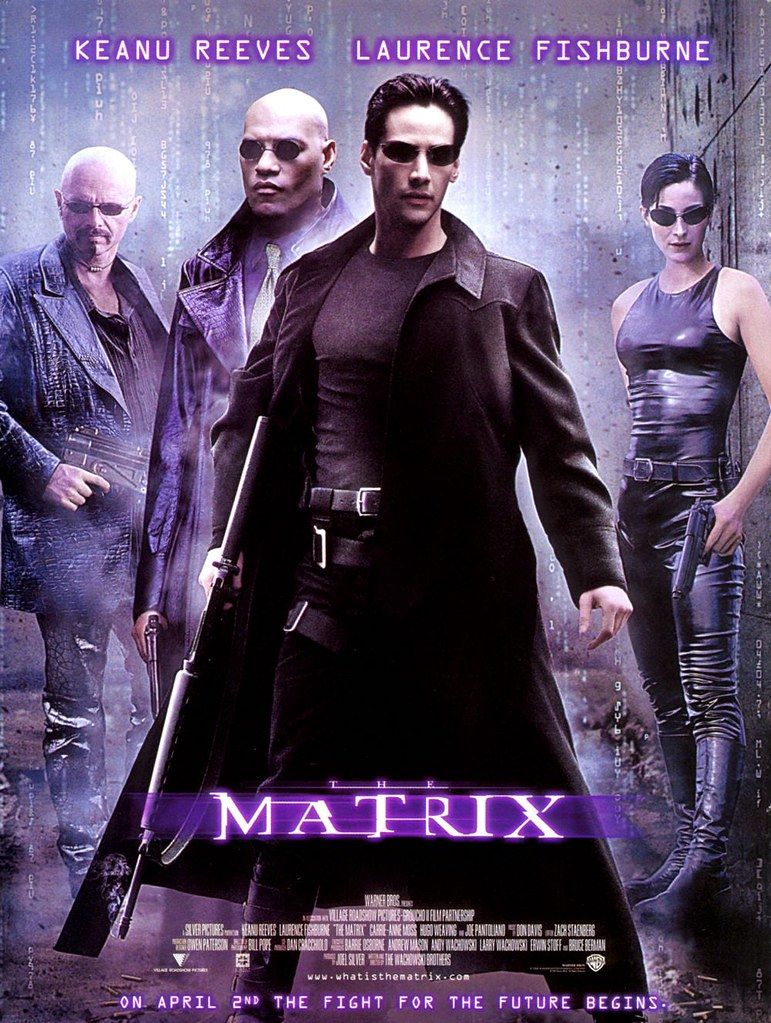
8. **The Matrix (1999): The Reflective Camera**Prepare to unplug and re-enter the digital world of *The Matrix*, the groundbreaking 1999 sci-fi action film that redefined an entire genre and sparked endless philosophical debates. With its innovative “bullet-time” effects, sleek cyberpunk aesthetics, and mind-bending storyline, *The Matrix* is a visual feast. Given the film’s complex visual language and ambitious production, it’s understandable that a tiny, almost imperceptible slip-up managed to sneak into one of its most iconic sequences, giving us a delightful peek behind the digital curtain.
The particular error surfaces during a crucial moment when Neo, still grappling with the mind-shattering revelations about his reality, is attempting to understand his new world. He reaches for a doorknob, and as the camera captures this seemingly mundane action in a close-up, something utterly unexpected becomes visible. Within the highly polished, reflective surface of the doorknob, you can clearly make out the reflection of a film camera. Yes, an actual piece of the production crew’s equipment, caught in the reflection of a pivotal prop.
This isn’t just any old camera reflection, though. According to the production team, this particular scene presented a unique filming challenge that made it “just impossible to film any other way” without the camera being visible. Their ingenious, albeit ultimately unsuccessful, solution? They attempted to disguise the camera by putting a leather jacket on it! While the effort was commendable, the reflection of the oddly-jacketed camera still managed to make its way into the final cut, becoming a charming, unintended cameo.
Once you spot this elusive camera and its leather jacket disguise, it’s impossible to unsee, turning a tense moment of revelation into a playful game of “spot the crew.” It stands as a testament to the immense complexity of filmmaking and the ingenious, sometimes comical, lengths production teams go to. It’s a fun little glitch in the Matrix that adds another layer of intrigue to a film already brimming with secrets!
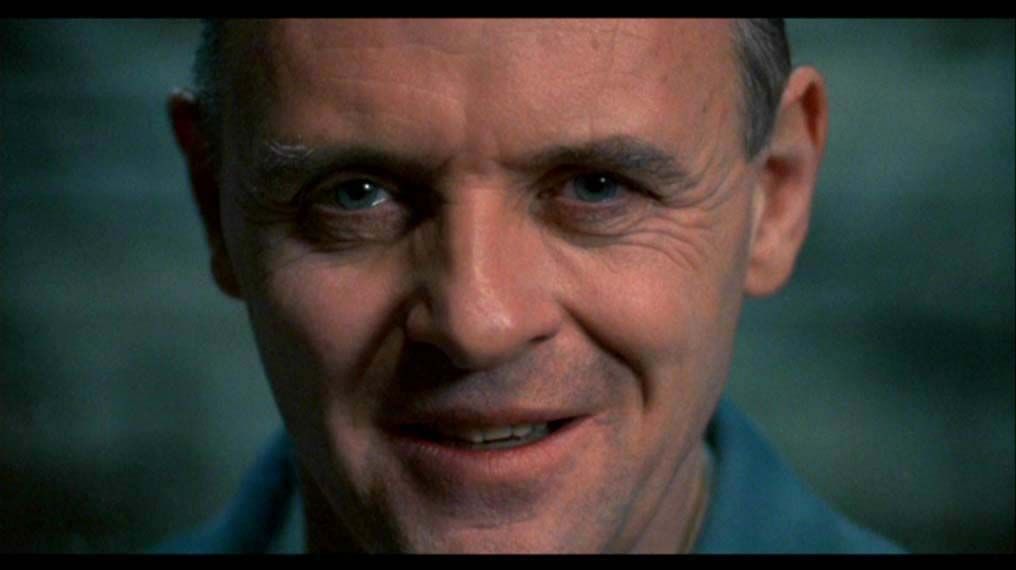
9. **The Silence Of The Lambs (1991): The Case of the Changing Eye Color**Let’s shift gears to a chilling classic that still sends shivers down our spines: 1991’s psychological horror-thriller, *The Silence of the Lambs*. This film is renowned for its gripping narrative, masterful performances, and particularly for the unforgettable character of FBI trainee Clarice Starling, brought to life by Jodie Foster. Clarice’s intelligence, resilience, and distinctive bright blue eyes are all integral to her character’s powerful presence on screen. However, a subtle but intriguing visual inconsistency pops up, throwing a bit of a curveball into her backstory.
During a pivotal moment in the film, we are given a rare glimpse into Clarice’s past through a flashback scene. These flashbacks are crucial for understanding her motivations and the traumatic experiences that shaped her into the determined agent she is. In this particular flashback, we see a young Clarice, a small girl whose innocence contrasts sharply with the grim realities of her childhood. It’s a powerful emotional beat that adds depth to her character, but it also introduces an unexpected detail that fans have been pondering ever since.
If you pay close attention to the young girl portraying Clarice in this flashback, you’ll notice that her eye color is distinctly dark. This is a noticeable contrast to the bright blue eyes that are one of adult Clarice Starling’s most recognizable and often emphasized features. While it might seem like a minor detail in the grand scheme of such an intense film, for those who notice it, it becomes a fascinating continuity error that sparks questions about character consistency and the meticulousness of casting.
This subtle shift in eye color offers a quirky, human element to the otherwise taut and chilling narrative. It’s the kind of detail that makes you wonder how such a prominent physical trait could have been overlooked in the casting or production process. A delightful, if slightly distracting, little flub, it reminds us that even in the darkest and most critically acclaimed films, a small touch of human error can sneak past the most watchful eyes, becoming a beloved talking point for fans for years to come.

10. **The Shawshank Redemption (1994): The Modern Cigarette Logo**Prepare to enter the formidable walls of Shawshank State Penitentiary with one of the most beloved and critically acclaimed films of the 90s: 1994’s *The Shawshank Redemption*. This timeless drama, celebrated for its themes of hope, perseverance, and freedom, transports us to the mid-20th century, a period setting meticulously crafted to immerse viewers in the world of Andy Dufresne and his fellow inmates. But even in a film praised for its attention to detail and powerful narrative, a tiny anachronistic prop managed to light up a little continuity error.
Toward the latter part of the film, in a tense and pivotal scene, Warden Samuel Norton is confronting Tommy Williams. Before the Warden orders the tragic fate of Tommy, in a display of false magnanimity or perhaps a twisted power play, he offers Tommy a cigarette. It’s a seemingly innocuous gesture, adding a layer of character interaction and subtle menace to the scene. However, the brand of cigarette, or rather, a specific detail on its packaging, reveals a humorous temporal slip-up.
If you take a very close look at the logo on the front of the cigarette pack or the cigarette itself, eagle-eyed viewers have spotted the distinctive mark of “Marlboro Miles.” Now, for those who remember, Marlboro Miles was a popular customer loyalty program introduced by the Marlboro brand. The catch? This particular character and promotional program weren’t actually invented or widely used until the 1990s, the very decade the film was released! This is well after the film’s mid-century setting, which primarily spans from the 1940s to the 1960s.
This small but noticeable detail – a modern marketing gimmick appearing decades before its time – is a fantastic example of a subtle anachronism. It’s the kind of blink-and-you’ll-miss-it mistake that doesn’t detract from the film’s profound impact but provides a fun little Easter egg for attentive viewers. It’s a testament to how even in the most painstakingly recreated period pieces, sometimes a little piece of the present can accidentally sneak into the past!
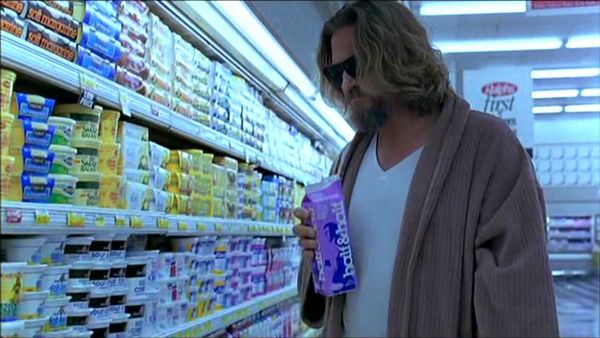
11. **The Big Lebowski (1998): The Time-Traveling Tune**Last but certainly not least, let’s roll into the laid-back, wonderfully absurd world of *The Big Lebowski*, the Coen Brothers’ 1998 cult classic that gave us The Dude, an icon of effortless cool and philosophical nonchalance. This film is a glorious odyssey through the counterculture remnants of Los Angeles, brimming with unforgettable characters, quotable lines, and a soundtrack that perfectly encapsulates its slacker vibe. But even The Dude, with his zen-like approach to life, couldn’t prevent a sly little anachronism from slipping into his chill existence.
The error comes to light during a scene where The Dude, ever the picture of relaxation, is seen sitting and waiting at his doctor’s office. To pass the time, he’s doing what any self-respecting slacker would do: listening to music through his headphones. It’s a simple, relatable moment that further solidifies his unbothered persona, allowing us to sink deeper into his world of bowling and White Russians. However, the song playing through his headphones proves to be a bit of a temporal paradox.
The tune serenading The Dude is none other than Elvis Costello’s “My Mood Swings.” A cool track, no doubt, and perfectly suited to the film’s eclectic musical tapestry. The fascinating part, however, is that while the film itself was released in 1998, its narrative is largely understood to be set around 1991. Here’s the kicker: Elvis Costello’s “My Mood Swings” wasn’t actually recorded until 1997! That makes the song appearing in The Dude’s headphones a full six years *before* the film’s supposed timeline.
This delightful anachronism is a fantastic, subtle nod to the kind of whimsical, slightly ofilter reality that *The Big Lebowski* so brilliantly creates. It’s the ultimate “Wait, did that just happen?” moment for music lovers and timeline sticklers alike. This time-traveling tune doesn’t just add a layer of humor to the scene; it becomes a legendary piece of the film’s enduring charm, proving that sometimes, even a misplaced song can make a movie mistake utterly iconic.
And there you have it, folks! Another deep dive into the wonderfully flawed world of 90s cinema, revealing that even the most cherished blockbusters have their little moments of imperfection. From misplaced props to anachronistic tunes and historical blunders, these mistakes don’t diminish our love for these films; they simply add another layer of charm and a fun challenge for eagle-eyed fans like us. So next time you’re settling in for a 90s movie marathon, keep your eyes peeled – you never know what delightful goof might be waiting to be discovered, ready to spark another passionate debate among friends and fellow film buffs!



